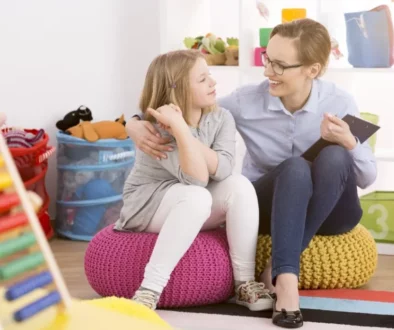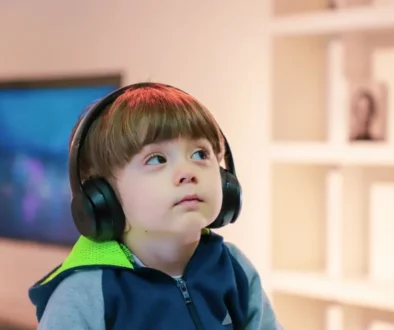Taking Care: How to Find Autism Support for You and Your Family
Are you or your child experiencing symptoms of autism? Has someone in your family recently received an autism diagnosis? If so, you may be wondering what are your options for autism support.
Fortunately, autism resources, support, and organizations have increased over the past few decades. Awareness about the condition has grown. Still, getting an autism diagnosis can be frightening.
There is not currently a cure for autism spectrum disorder. But treatment and therapy make it possible for people with autism to live regular lives.
Here’s what you need to know about autism spectrum disorder, autism diagnoses, and getting autism support.
What Is Autism Spectrum Disorder?
Autism spectrum disorder (ASD) is a cognitive profile. It affects how a person behaves, learns, and expresses themself. Autism spectrum disorder brings specific challenges as well as strengths.
While most people with autism share some symptoms in common, every individual’s experience of autism is different.
Types of Autism
Autism spectrum disorder involves three different categories of autism. The level of diagnosis depends on the severity of the disorder and how much support is required.
Level One
Autism spectrum disorder level one is the mildest form of autism. People with mild autism are considered high-functioning.
A person with level one autism may find it difficult to read social cues and body language. This makes it a challenge for them to communicate appropriately with others.
Organization, planning, and moving from one activity to another may also present challenges to a person with level one autism.
Level Two
A person with an autism level two diagnosis may have more obvious struggles with verbal and social communication than someone with a level one diagnosis. Focusing and moving to other activities can also be difficult.
A person with autism level two may also have narrow interests and perform repetitive behaviors. They require more support than a person with a level one diagnosis.
Level Three
A level three autism diagnosis is the most severe and requires the most support. A person with a level three diagnosis will exhibit the same behaviors as a person with level one or two, but the behavior is more extreme.
A person with a level three diagnosis will have more severe challenges expressing themself either verbally or nonverbally. It is also much more challenging for them to switch focus or location.
Repetitive behaviors and verbalizations are also more severe for level three.
Getting an Autism Diagnosis
Getting an autism evaluation and diagnosis is the first step in getting help and support. For some people, an autism diagnosis is a relief. It allows them to name and understand what they’ve been experiencing.
For others, especially very young children, the diagnosis can be difficult to understand. A parent may need to explain the diagnosis to the child. This can result in tantrums, withdrawal, and difficulty sleeping.
Emotional reactions to an autism diagnosis can mimic other conditions like depression. Autism can also come with a companion diagnosis of ADHD, anxiety, or sleep or gastrointestinal disorders.
Coping with the emotions that come with an autism spectrum disorder diagnosis can be particularly difficult for people with ASD to handle. Difficulty processing and communicating emotions are part of the diagnosis.
Adults who get an ASD diagnosis can also have a hard time coming to terms with it after living with the symptoms for so long.
Living With Autism
Getting an autism diagnosis can be relieving, distressing, or a combination of the two. Living with autism has its impacts. They occur on an emotional, physical, and social level.
Emotional Impact
Many people living with autism experience anxiety symptoms. This doesn’t necessarily indicate an anxiety disorder. It is often a reaction to the frustrations of daily life a person with autism experiences.
Struggles with social interaction, inability to navigate emotions, feeling misunderstood, and overstimulation are all symptoms of ASD that can cause anxiety.
Meltdowns are also common but can improve with therapy and as the person gains more understanding of their diagnosis.
Physical Impact
Selective eating habits are a common symptom of autism spectrum disorder. For that reason, it can be difficult for people with ASD to maintain a balanced diet. People with autism can require help to stay active and eat well.
Social Impact
Difficulty socializing is a common symptom of ASD. People with autism must have support to learn how to socialize appropriately.
Impact on Caregivers
Caregivers of people with autism also experience struggles. The symptoms of autism can be difficult to manage and sometimes require full-time care. In other situations, people with autism can lead a regular, independent life.
Caregivers of people with autism need to practice self-care. being the parent of a child with autism takes a lot of patience, creativity, and intention. Taking care of yourself will enable you to better care for your child.
Autism Resources & Organizations
An autism diagnosis is not something anyone should have to navigate on their own. It is important to understand many people aren’t just living with autism but living well. Seek out help and support.
These days there are many more options for physical, social, and emotional support for people with autism and their caregivers than in previous decades.
Therapy
Several different types of therapy can help people with autism. Speech-language therapy can help with verbal and non-verbal communication. Occupational therapy helps with performing daily tasks.
Social skills training helps teach conversation skills and improve social-emotional learning.
Sensory integration therapy helps regulate sensory input for those who experience sensory processing issues. Finally, cognitive behavioral therapy aids in recognizing emotions and navigating social situations.
Organizations
There are many excellent Autism awareness and support organizations. These organizations include Autism Society, Autism Speaks, Asperger/Autism Network, and Color of Autism.
They offer resources, services, and access to support groups for people with autism and their caregivers.
Free Services
Children under ten with an ASD diagnosis or other developmental challenges can benefit from services through IDEA or the Individuals with Disabilities Act.
TheIndividuals with Disabilities Education Act makes it possible for children with developmental challenges to get free and low-cost services to help their condition. These include physical therapy, speech therapy, and evaluations.
Local Support Groups
Joining a local support group is a great way to connect with other families and individuals in your community who experience autism. Getting to know other people who are in the same situation as you can make a big difference.
Local support groups aren’t only great for the person living with autism; they are an excellent resource for the caregivers of that person as well.
Get Autism Support Today
Autism is a lifelong condition that comes with both strengths and challenges. Autism support is necessary and available to individuals and families with autism in the form of therapy, services, organizations, and support groups.
If you think you or your child is exhibiting symptoms of autism spectrum disorder, it is important to get an autism spectrum evaluation. Request an appointment for a consultation or evaluation today.



